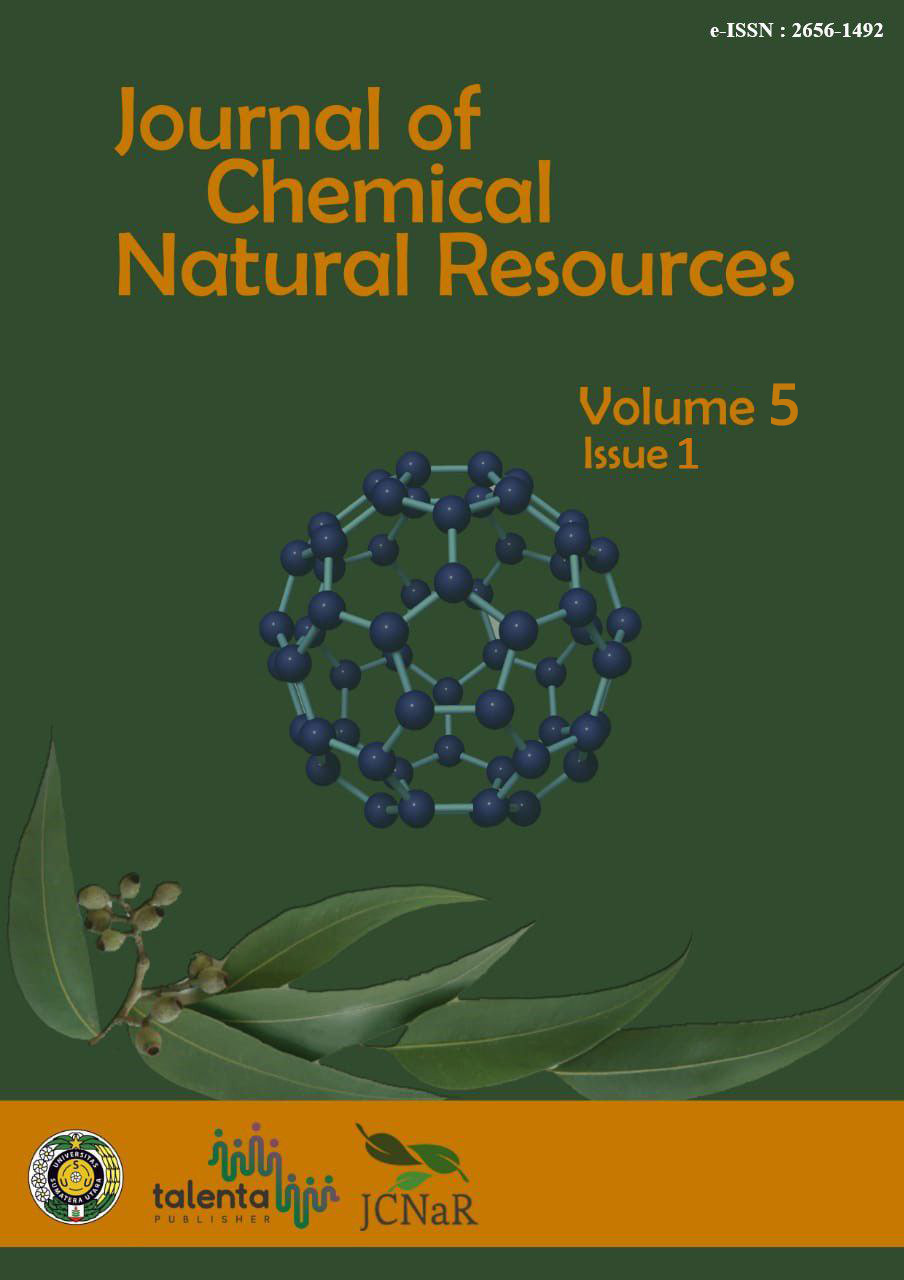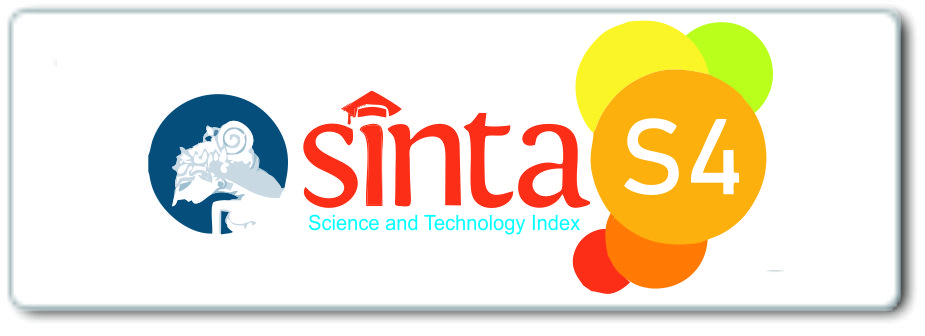Chemical Components Analysis of Kencur (Kaempreria galanga L) Essential Oil Using GC-MS Method and Its Insecticide Tests on Fruit Fly (Bactrocera sp.)
DOI:
https://doi.org/10.32734/jcnar.v5i1.11986Keywords:
Ginger Rhizome, Extraction, Essential Oil, and InsecticideAbstract
The hydrodistillation method isolated the essential oils of Kencur (Kaempreria galanga L) using the Stahl apparatus. It was distilled for ± 5-6 hours to produce as much as 0.89% (w/w) essential oil. The chemical components of Kencur essential oil were analyzed using GC-MS, consisting of 7 compounds which seven compounds could be identified, name: Limonene (2.39%), Cineol (2.22%), and terpenes (0.80%). Hexane (1.51%), Borneol (13.23%), Methyl cinnamate (1.50%), ethyl ester (78.35%) and its insecticide test from Kencur essential oil showed Bactrocera sp. mortality. The highest was 96.7% in the 3% ginger rhizome essential oil concentration
Downloads
References
JEYASANKAR, Alagarmalai; RAJA, Nagappan; IGNACIMUTHU, Savarimuthu. Insecticidal compound isolated from syzygium lineare wall.(Myrtaceae) against Spodoptera litura (Lepidoptera: Noctuidae). Saudi Journal of Biological Sciences, 2011, 18.4: 329-332.
Djogosumarto, P. 2000. Teknik Aplikasi Pestisida Pertanian. Kanisius. Yogyakarta. 79 hal.
RAHMAWASIAH, Rahmawasiah, et al. The effect of integrated pest management on Scirpophaga innotata population and natural enemies on rice field in South Sulawesi, Indonesia. Biodiversitas Journal of Biological Diversity, 2022, 23.9.
TUDI, Muyesaier, et al. Agriculture development, pesticide application and its impact on the environment. International journal of environmental research and public health, 2021, 18.3: 1112.
AYVAZ, Abdurrahman, et al. Insecticidal activity of the essential oils from different plants against three stored-product insects. Journal of insect science, 2010, 10.1.
Riasari, H., Rachmaniar, R., & Wahyuni, S. (2019). Evaluation Patch of Rhizoma Extract Kencur (Kaempferia galanga L.) as Anti-Inflammatory with Enhancer. Indonesian Journal of Pharmaceutical Science and Technology, 6(2), 59-64.
Diomandé, G. D., Koffi, A. M., Tonzibo, Z. F., Bedi, G., & Figueredo, G. (2012). GC and GC/MS analysis of essential oil of five Aframomum species from Côte D’ivoire. Middle-East Journal of Scientific Research, 11(6), 808-813.
Untung, K. 2001. Introduction to Integrated Pest Management. Yogyakarta: Gadjah Mada University Press
Kusnaedi, 1996. Pest Control Without Pesticides. Bekasi: Independent Spreader
Buentello-Wong, S., Galán-Wong, L., Arévalo-Niño, K., Almaguer-Cantú, V., & Rojas-Verde, G. (2016). Toxicity of some essential oil formulations against the Mexican fruit fly Anastrepha ludens (Loew)(Diptera: Tephritidae). Industrial Crops and Products, 85, 58-62.

Downloads
Published
Issue
Section
License
Copyright (c) 2023 Journal of Chemical Natural Resources

This work is licensed under a Creative Commons Attribution-ShareAlike 4.0 International License.














